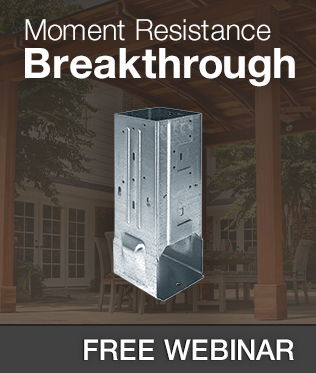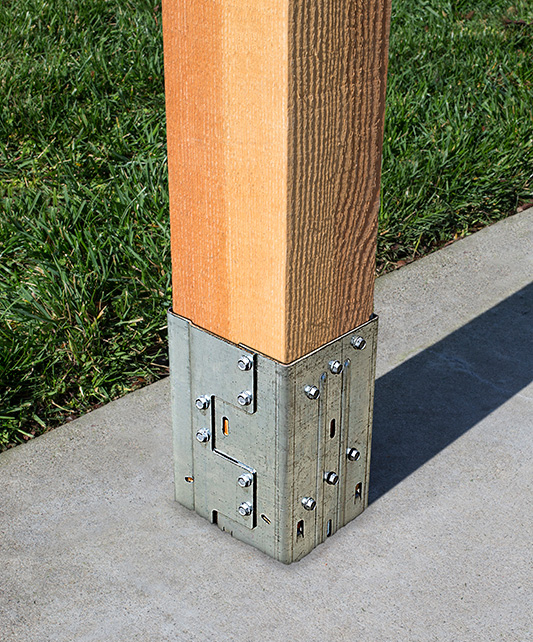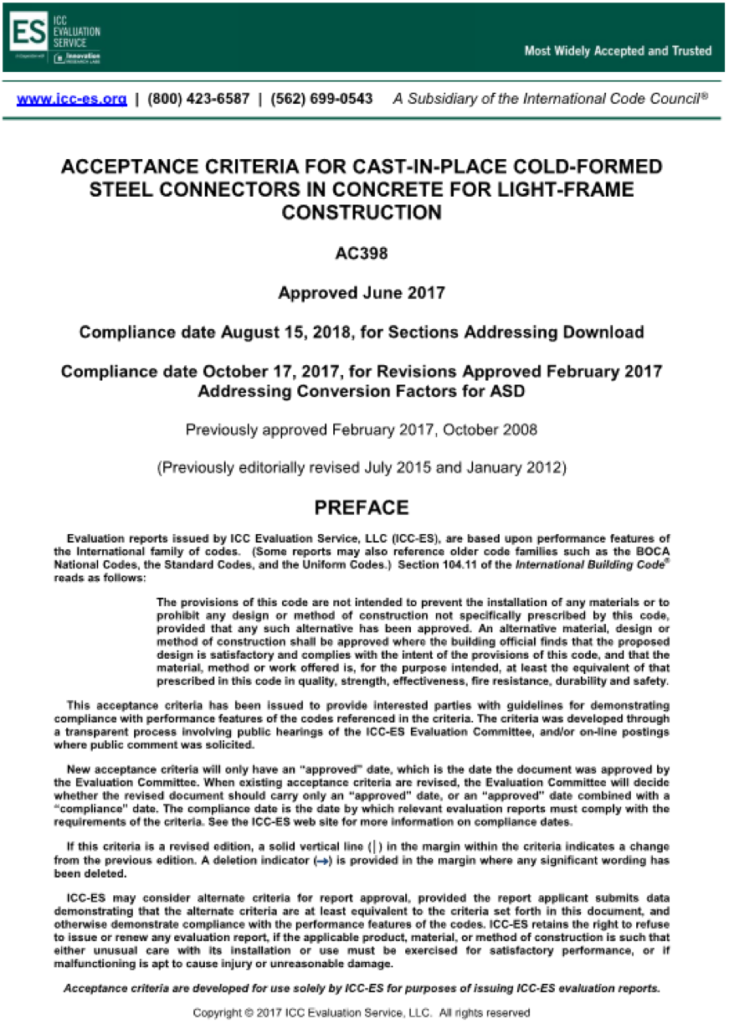This week’s post was written by Jhalak Vasavada, Research & Development Engineer at Simpson Strong-Tie.
When we launched our new, patent-pending MPBZ moment post base earlier this year, the evaluation of the moment capacity of post bases was not covered by AC398 – or by any other code, for that matter. There wasn’t a need – there were no code-accepted connectors available on the market for resisting moment loads.
We proposed adding moment evaluation to the AC398 and presented our research to the ICC-ES committee in June. After a thorough review, which included a public hearing, the provision was approved. Here are some details about the revisions to this acceptance criteria.
What is AC398?
AC398 is the Acceptance Criteria for cast-in-place cold-formed steel connectors in concrete for light-frame construction.
Acceptance criteria are developed to provide guidelines for demonstrating compliance with performance features of the codes referenced in the criteria. ICC-ES develops acceptance criteria for products and systems that are alternatives to what is specified in the code, or that fall under code provisions that are not sufficiently clear for the issuance of an evaluation report.
The criteria are developed through a transparent process involving public hearings of the ICC-ES Evaluation Committee (made up entirely of code officials), and/or online postings where public comments were solicited.
How is the moment load evaluated?
The MPBZ moment post base is a cast-in-place post base designed to resist uplift, download, lateral and moment forces. This blog post in February describes how it works, how it was tested and includes a design example. Since the MPBZ falls under the specialty inserts category of cast-in anchorage, it is not covered by the provisions of chapter 17 of ACI 318-14. Therefore, the MPBZ was evaluated based on AC398 for anchorage to concrete.
Our engineers worked closely with ICC-ES and the American Wood Council to develop evaluation criteria for moment. This revision to the criteria for moment evaluation and testing was posted for public comments on the ICC-ES website, and then presented by our engineers at the ICC-ES committee hearing last June. The presentation included the design, use, testing and load rating of the MPBZ. Following the hearing, and a thorough review, the committee approved the proposed revision to AC398.
What are the revisions to AC398?
With reference to moment evaluation, a few of the key changes to AC398 are:
- Moment Anchorage Strength: Similar to tension and shear anchorage strength, the available moment anchorage strength shall be determined using the equation
Where F = applied horizontal test force used to determine moment strength (lbf)
D = vertical distance from top of concrete member to the applied lateral test force F (ft.) (moment arm)
Other terms are as previously defined for tension and shear anchorage strength equations.
- Rotation: Testing of moment base connectors subject to an applied moment shall include measurement and reporting of the connector rotation as determined by the relative lateral displacement of gauges positioned 1″ and 5″ above the top of the connector.
- Side Bearing: Testing of moment base connectors that rely on bearing of the wood member against the side of the connector to resist moment loads shall address wood shrinkage.
Learn more about the MPBZ by watching our free webinar.
On December 6 we hosted an interactive webinar on the MPBZ moment post base, its evaluation, its testing and its applications. In this webinar, we discussed MPBZ moment post base product features, product development, design examples and much more. Attendees had an opportunity to ask questions during the event and you can find answers to those questions here.
Watch a free MPBZ webinar.
Join Simpson Strong-Tie R&D engineer Jhalak Vasavada, P.E., and Simpson Strong-Tie product manager Emmet Mielbrecht for a lively and informative discussion of MPBZ.







